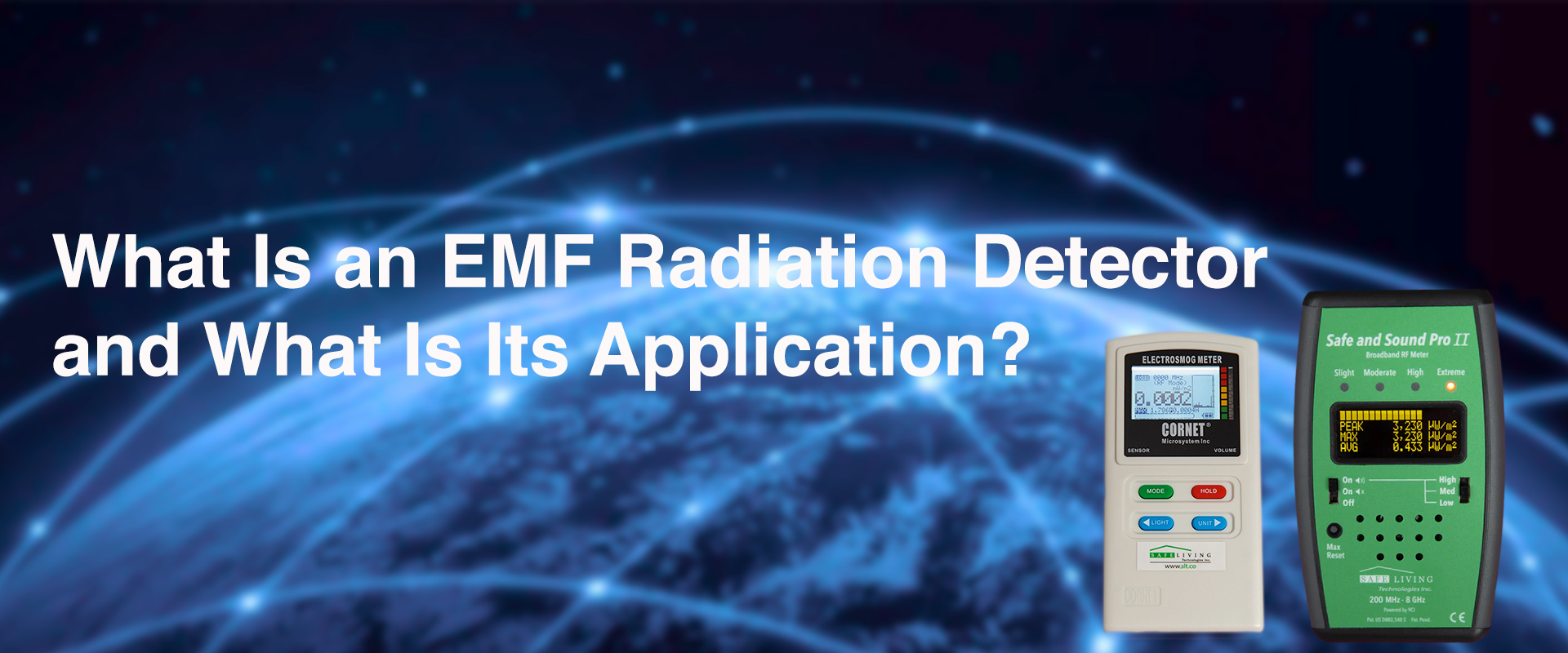What Is an EMF Radiation Detector and What Is Its Application?

An invisible, odorless, flavorless force surrounds the earth. It's radiation. Natural electromagnetic radiation comes from the sun, the ionosphere, and the earth itself.
Modern technology has created new sources of electromagnetic radiation. Electric wires, appliances, and wireless devices create it. Most people are exposed to it daily.
Experts have expressed concern over the cumulative effects of all this radiation exposure. They suggest using EMF meters and monitors to check radiation levels in homes and workplaces.
Using an EMF detector requires a basic understanding of electromagnetic fields. Here's more information about them and the EMF meters that detect them.
What Is an EMF Detector?
EMF stands for electromagnetic field. Thus, an EMF detector is able to measure the electromagnetic field in a particular area. More specifically, an electromagnetic field (EMF) detector gives a precise measurement of the electromagnetic waves in the specific area that the user is measuring.
In other words, EMF detectors measure radiation.
These are popular tools for inside the home and on the job site. They can find inconsistencies in the electromagnetic field that may show signs of electrical issues or improper wiring.
Without one of these devices, we'd be left to guess where problems are occurring. And, we'd end up taking in long-term damage from radiation exposure without even knowing it.
All in all, EMF detectors can help us avoid dangerous radiation that we wouldn't be able to detect otherwise.
What Are EMF Measurements?
EMF measurements refer to the number of electromagnetic fields that are surrounding an EMF probe or sensor. An EMF detector is a particular kind of sensor. So, an EMF detector can take EMF measurements.
In fact, the measurement of surrounding electromagnetic fields is what the device uses to differentiate high levels and normal levels. In other words, the device calibrates itself to its surroundings to find abnormal values.
In order to get accurate results, the user of one of these measuring devices should ensure that the probes aren't disrupting the electromagnetic field. If this happens, coupling and reflection could follow. This would alter the results of the measurement and render the device ineffective.
When used properly, EMF meters and monitors can perform two kinds of EMF measurements:
- Broadband measurements
- Frequency-selective measurements
We can find broadband measurements by using a broadband probe. Usually, these devices have three independent diode detectors. Broadband probes can sense a wide variety of signal frequencies.
On the other hand, frequency-selective measurements allow the user to test for particular signal frequencies. These devices have a field antenna and a receiver or spectrum analyzer. The receiver/analyzer is the piece that makes it possible to test for a range of different frequencies.
EMF probes can respond to electromagnetic fields on one axis or three axes. Tri-axial EMF probes can show measurements in three directions at once.
Probes that are amplified or active are more precise. But, with this, they're also slower.
Is All EMF Radiation the Same?
In short, no.
In fact, there are three different kinds of electromagnetic radiation:
- Natural
- Low frequency
- High frequency
Natural EMF is just what it sounds like. It's naturally occurring. Natural EMF frequencies can come from two different phenomena:
- A build-up of electricity in the atmosphere which usually comes from thunderstorms
- The Earth's natural magnetic field
Low-frequency (LF) EMF frequencies come from electrical sources like power transformers, high voltage cables, and home appliances.
On the other hand, high-frequency (HF) EMF frequencies come from modern communication equipment. This includes devices like mobile phones, Wi-Fi routers, and laptops.
Why Is EMF Measurement Equipment Important?
EMF measurement equipment is the easiest way to detect the radiation around us. Remember, radiation is completely invisible. You can't see, smell, taste, or sense it in any way.
And, yet, long-term exposure can still cause long-term damage. So, it's important that we're able to detect EMF levels.
If we can find (and avoid) areas of high EMF, we can prevent the risks that are associated with long-term exposure to the radiation.
Dangerous levels of radiation like this can exist in the home, at work, in school, and anywhere else. So, it's important to keep these devices in all businesses, especially those that use a lot of electrical equipment. People can use the devices to figure out if there are abnormally high levels of electromagnetic radiation.
If there are chronically high levels of EMR for too long, it can start to affect electronic devices. This includes radios, televisions, computers, cell phones, and more.
These devices can become so damaged that they can cease working completely. Thus, the damage can progress beyond repair.
You should review these EMF safety tips to reduce, eliminate, and verify electromagnetic waves.
Which Magnetic Field Analyzer Should I Use for a Certain EMF Frequency?
As we've covered, different EMF devices run on different frequencies. So, if you're looking for different kinds of radiation, you need to use different kinds of equipment.
If you're trying to find general electromagnetic waves, you should use broadband measurement devices. If you're looking for a specific range of frequencies, you should opt for a frequency-specific measurement device.
As a further example, you should use a gauss meter (such as the MG-300) to measure low-frequency magnetic fields. However, if you're trying to find high-frequency magnetic fields, you should use an HF-B3G meter.
Investing in an EMF Radiation Detector
Whether you're working with electrical wires at work, at home, or elsewhere, you need to have a radiation detector. By investing in EMF meters and monitors, you can make sure that you're not exposing yourself to harmful radiation.
And, it's important to invest in a quality meter. That's where we come in.
Our team here at Safe Living Technologies, Inc. has been creating quality EMF radiation detectors since 2006. And, we have a wide range of detectors for you to choose from.
Check out our EMF detectors here.


